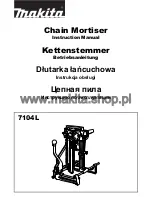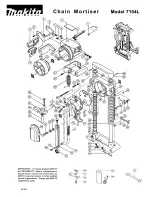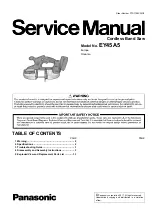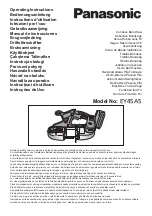
Customer Helpline
0333 3201989
12
Operating Instructions
G
H
4. CROSS PULL CUT
Cross pull cut is used mainly for wide pieces, allowing you to cut wider pieces of wood, i.e. the
slide rod securing knob is loose, the saw head is pulled towards the operator, the saw head is
lowered to the workpiece and then pushed to the rear of saw to make a cut to do this, follow the
procedures below:
1) Loosen the slide rod securing knob .
2) Before switching on, pull the saw head towards you whilst in the upright position, until the
blade clears the workpiece or to its
maximum extension if blade can not clear the workpiece.
3) Start the saw.
4) Lower the saw head into the workpiece.
5) Push the saw head forwards (towards the full rear position) to complete the cut.
6) When cutting is finished, release the trigger switch and allow the blade to stop rotating before
lifting the saw head up away from the workpiece.
WARNING: Never pull the saw towards you during a cut. The blade can suddenly
climb up on top of the workpiece and force itself towards you.
5. MITRE CUT (SEE FIG H1, H2)
A mitre cut is made at 0° bevel and any mitre angle in the range from 45° left to 45° right. It
can be made as either a chop cut or
a cross pull cut depending on the width of the workpiece.
For most convenient operation, your sliding mitre saw is equipped with mitre detents for
fast and accurate mitre cuts of common
mitre angles (Left: 45°, 30°, 22.5°, 15°;0°; Right: 0° ,15°, 22.5°, 30°, 45°).
The mitre table lock knob (8) is used to lock the table at the desired mitre angle. To adjust
the mitre angle, loosen the rotary table handle (9) counter-clockwise and raise the mitre
latch (10) gently and adjust to the desired position, then release the mitre latch (10) and
tighten the mitre table lock knob (8) clockwise.
G2
H1
16
H2
I1










































